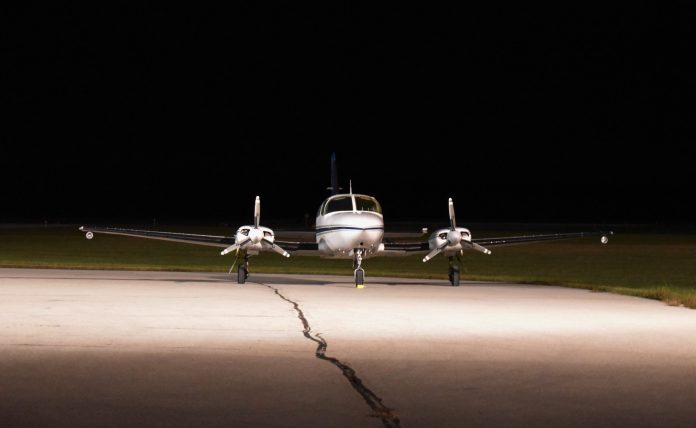By John McDermott
Aviation is popular and possible in the United States in a way unlike many other countries. Of the 40,000 airports in the world, over 5,000 (12 percent) are in the United States, and at least ⅓ of total pilots in the world (considering private, commercial, and military) are from the U.S.
This is possible due to the unique American geography. Only a select few countries, namely China and Russia, rival both the expansiveness and climate variation that the United States boasts and the U.S. is more sparsely populated than any other major developed country.
All this provides a larger market for flying. America’s high airport count includes public-use airports that do not have airline service but are used by private jets and small single and multi-engine propeller airplanes where building a strip of runway is easier than building major highways or train routes.
The abundance of airports makes it easy for people with few transportation options to learn to fly to visit family or take business trips, and it also makes it easy for people to learn to fly as a hobby. Within the United States population, the pilot community is small, but it is still incredibly strong. Thanks to involvement from a wider array of aviation enthusiasts in addition to pilots, the American flying culture is alive and well, with even the smallest airports hosting regular fly-ins, airshows, and festivals open to everyone who wants to attend.
American Aviation Safety Record
Any discussion of aviation, in the U.S. and everywhere, eventually comes to the question of safety. The United States’ airline industry is among the best and most well-developed in the world. U.S.-based passenger airlines have had only one fatality and zero crashes since 2009. That 14-year accident-free streak is the longest in the American aviation industry’s history.
That impeccable safety record is in part because, across the board, American airline pilots are better trained, more experienced, and more highly monitored than ever before. With more thorough procedures, more intensive training, and generally better pilot vetting and oversight, the American industry has become a model for aviation safety around the world.
General aviation, however, has different statistics. It must be made clear that general aviation is still incredibly safe, as the Federal Aviation Administration (FAA) has minimum training, recurrent training, and maintenance standards that apply to every licensed pilot in America regardless of what type of flying they do. However, the National Transportation Safety Board (NTSB) reports that general aviation’s fatal accident rate was 1.049 accidents per 100,000 flight hours, notably higher than airlines. That year, there were over 300 fatalities and about 1,100 total accidents in general aviation, according to the United States Department of Transportation.
Safety Practices in Airlines and General Aviation
Many of those crashes have been attributed in some way to pilots. While many pilots fly for decades without any accidents, it is important for all pilots to question why pilots are at fault in so many accidents and how to prevent accidents from happening in the future.
One of the biggest differences between airline flying and general aviation is the level of oversight. Simply put, airlines and airline pilots are affected by more federal regulations and more highly specific company policies that play significant roles in the decisions they make. Not only are pilots’ conversations recorded in the flight deck, but every piece of flight data is recorded on commercial airliners, and data is automatically sent to airlines’ safety boards if a non-standard procedure is detected, creating a higher level of accountability, safety, and oversight than is possible in general aviation today.
However, that does not mean that general aviation pilots are off the hook. In fact, general aviation pilots can and should learn a lot from the policies and procedures in professional flying. However, especially since they don’t ever consider flying professionally or get much opportunity to fly faster and more complex airplanes into busy airports, most general aviation pilots do not practically consider how to apply airline-level procedures to their own flying.

Inside the cockpit of an Airbus A220. (Photo: AirlineGeeks | Fabian Behr)
It is also important to distinguish between Part 135 flying and Part 91. Thus far, this article has used the term “general aviation” to refer to flying under Part 91 of the Code of Federal Regulations. Similarly-sized aircraft are operated under both Part 91 and Part 135, just with different sets of regulations as to who can fly where and when. Part 135 operators also have more clearly defined standard operating procedures that guide pilots through each phase of flight as well as abnormal situations that arise given enough flying time.
This comes back to the same point: in studying aviation accidents, often the biggest variable in each incident is the pilot. Why did the pilot respond as they did to each situation presented to them in flight, and how could they have reacted differently to exact a better flight outcome, for better or worse? And how can the pilot carry themselves differently to ensure safe flight outcomes every time?
Editor’s Note: Thus is born AirlineGeeks’ latest article series. Each week, we will take time to break down a new regulation written for professional pilots in Part 121 and Part 135 flying, and we will consider different ways to apply those regulations to general aviation. Some regulations have straightforward applications to general aviation, but there is usually more that meets the eye. Thus, we will take time to explore a wide variety of ways general aviation pilots can apply even simple things, like minimum rest requirements, to their own flying. Check back in next week for the first installment of the series.
[ad_2]
Source link

